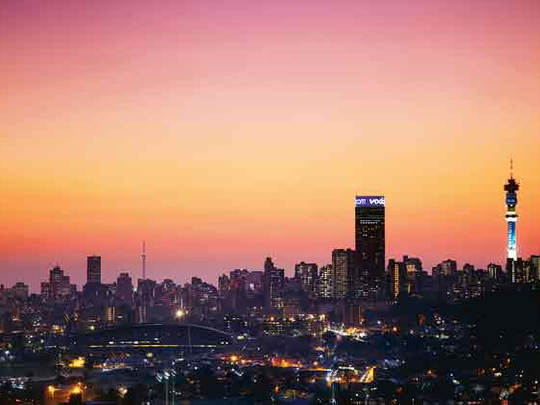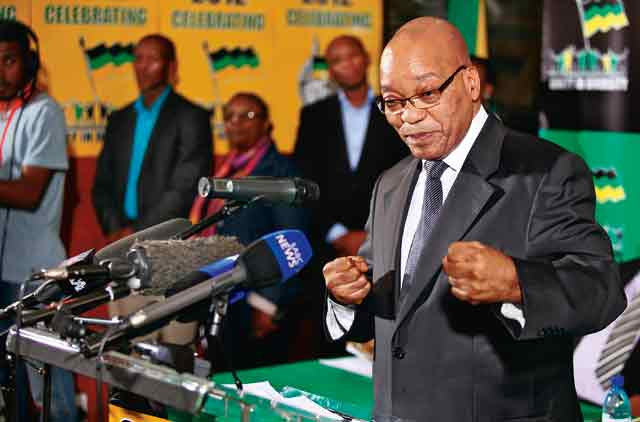
In the investment world, ‘sleeping beauties' are considered prime for pursuit, with ample powers to attract investors: attractive or undervalued assets, large reserves, and strong growth or earnings potential. A ‘Goldilocks economy' is one that is not so hot that it will cause inflation, and not so cold that it will cause a recession.
The South African economy seemingly is two enchanting fairytales at once.
Recent economic performance has been nothing short of impressive, with good macroeconomic policies, a steady financial sector and a flexible exchange rate. The prudent fiscal management of the mid-2000s has helped the nation combat a drop in output, and mitigated some of the worst effects of the global economic slowdown.
"In these difficult times for the global economy, emerging economies are a key part of the solution. South Africa has an important role >to play on behalf of the interests of developing economies and the African continent in particular; it has a leadership role to play in making the voice of Africa heard. I am confident it will continue to do so," declared Christine Lagarde, Managing Director of the International Monetary Fund (IMF), speaking in Pretoria in the first week of this year.
But as with the narration of all popular fairy tales, with voices drawn from across the world, there are differing views from different quarters.
Elna Moolman, an economist at Renaissance Capital, concurs with Christine Lagarde that the global economic slowdown holds the key to the South African economic outlook for 2012. "Not only will this to a large extent determine the extent of growth slowdown in South Africa, but it will also arguably be the key driver of the rand's trajectory — which is in turn a critical determinant of the inflation and interest rate trajectories. We are more bearish than the consensus about the prospects for 2012, expecting at best 2.8 per cent growth," she states.
In his budget speech in February, finance minister Pravin Gordhan said South Africa has cut its 2012 economic growth forecast to 2.7 per cent, from an October 2011 projection of 3.4 per cent, citing the impact of slowdowns in Europe and the US. Growth will pick up to 3.6 per cent in 2013 and 4.2 per cent in 2014, as effects of major government infrastructure spending filter through, he added.
Economists at Nedbank explain that slower growth is only natural for 2012, with lower demand from Europe affecting production and restricting exports in the agriculture, mining and manufacturing sectors. "Overall GDP growth is expected to slow to 2.7 per cent in 2012 as a whole," the economists agree.
Morgan Stanley analysts Michael Kefe and Andrea Masia predict that the economy will grow by 3 per cent in 2012. International Futures (IFs) forecasts GDP overall growth rate to decrease from 2010 to 2030, while GDP per capita — both in current and adjusted US dollars — will increase during the same period.
The IFs table shows the economy increasing by a healthy 3.87 per cent in 2012, followed by a gradual deceleration until 2020.
The Economist Intelligence Unit (EIU) is more optimistic, guesstimating slow growth in 2013-14, but an uptick to 3.7 per cent in 2015, and 4.1 per cent in 2016. However, EIU expects real GDP growth to fall to 2.3 per cent in 2012, owing to weaker global and domestic conditions.
The EIU sees most of South Africa's internal problems being offset by a recovery in the global economy. Apart from the downturn, the IFs estimate takes into account the projected drag of HIV/AIDS on the economy of South Africa. In a related fact, Euromonitor country report for 2011 suggested that HIV/AIDS will cut 1 to 2 per cent off South Africa's GDP every year. An estimated 20 per cent of the general population is infected with HIV/AIDS including 22 per cent of pregnant women.
According to the Euromonitor report, political risk also remains a great concern, "with slow progress in development and President Jacob Zuma's attempts to be all things to all people." Poverty is another grim character of the country's future. Although there has been some progress, about 60 per cent of black South Africans still fall below the poverty line. The country has also been plagued in recent times by worker strikes over the nationalisation of mines.
The upside is that the economy is supported by multiple tailwinds including the lowest interest rates in more than three decades, an expansionary fiscal stance, modest inflation, higher-than-expected wage increases and an overall recovery in confidence.
As the most developed country on the continent, South Africa is geopolitically significant as a gateway into Africa. The country's prominence within the Southern African Development Community, which affects a large market of more than 250 million people in 15 countries, is conspicuous, and it is by far its most influential member.
But most importantly, South African consumers have exceeded all expectations in the post-recession recovery period, and are expected to continue building on their fairytale.
When Morgan Stanley raised its 2012 GDP forecast for South Africa from 2.5 per cent to 3 per cent, they emphasised that it was not merely because of an improved view of the global economy, but also because of their deep belief in South African consumers — Sleeping Beauties, Goldilocks and all. n
Services, manufacturing and energy sectors dominate the economy and are projected to strengthen further in the long term, followed by materials, information communication technologies (ICT) and agriculture. Although mining accounts for only 9.3 per cent of GDP, it brings in almost one-third of total exports.
Euromonitor says that the tourist economy has doubled after the elimination of apartheid, and continues to encourage large government backing on account of its job generating capacity. The banking and financial sectors — which require 25 per cent black ownership — also appear to be strong.
The EIU projects inflation to rise to 5.3 per cent in 2012, largely factoring in an increase in electricity prices, and wage growth. However, they suggest inflation will ease a bit from 2013 to 2016, helped by what the forecasters see as more stable global commodity prices.
Consumer spending is expected to support domestic trade, while value additions by the general government are likely to moderate due to budget constraints.



